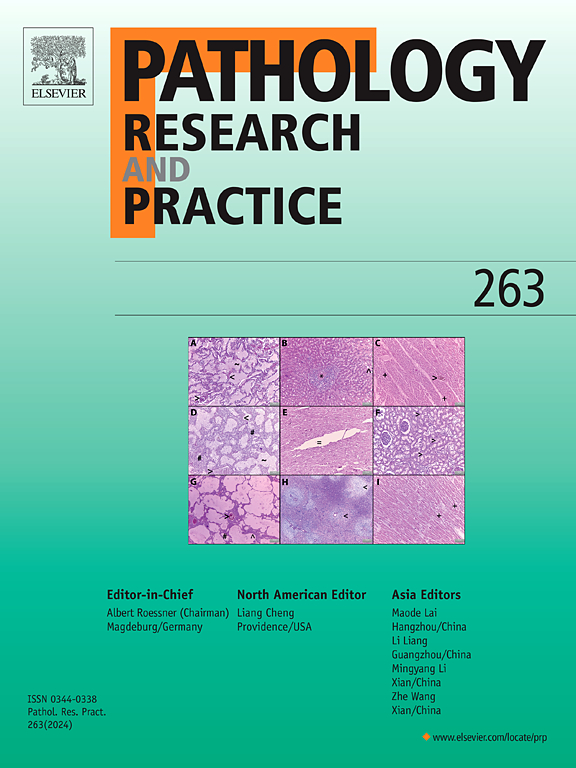Automated assessment of skin histological tissue structures by artificial intelligence in cutaneous melanoma
IF 2.9
4区 医学
Q2 PATHOLOGY
引用次数: 0
Abstract
Background
Prognostic histopathological features such as mitosis in melanoma are excluded from the staging systems due to inter-observer variability and time constraints. While digital pathology offers artificial intelligence-driven solutions, existing melanoma algorithms often underperform or narrowly focus on specific features, limiting their clinical utility.
Objective
Develop and validate an automated artificial intelligence-driven segmentation framework to identify multiple histological tissue structures within cutaneous melanoma images.
Methods
Employing 157 melanoma whole slide images, U-Net and DeepLab3+ classifiers were independently trained Oncotopix ® platform using manual annotations, to detect specific histological features, termed application. All the applications are progressively executable. The performance of each application was measured when both operating independently and with sequential detection when applied to ten independent validation set images using accuracy and F1-score as metrics. The model was further validated by applying it to 442 whole-slide melanoma images, with dermatopathologists reviewing the segmentation outputs.
Results
Seven applications were developed for progressive automated detection: Whole tissue (1) and tumour microenvironment (TME) (2), Hair follicles & sebaceous gland (3) within TME, ulceration (5), and melanoma cell area (6) based on DeepLab3+. Epidermis (4) and mitosis within the tumour area (7) based on U-Net. The applications demonstrated over 92 % accuracy and F1-score surpassing 80 %, except for the ulceration application (F1-score = 75 %). The pathologist examination indicated that 92 % of the 442 images had correct segmentations.
Discussion and Conclusion
The developed applications demonstrated high performance, enhancing the analysis of time-consuming histological features. The model facilitates the identification of histopathological features in large datasets allowing potential refinement of melanoma staging.
求助全文
约1分钟内获得全文
求助全文
来源期刊
CiteScore
5.00
自引率
3.60%
发文量
405
审稿时长
24 days
期刊介绍:
Pathology, Research and Practice provides accessible coverage of the most recent developments across the entire field of pathology: Reviews focus on recent progress in pathology, while Comments look at interesting current problems and at hypotheses for future developments in pathology. Original Papers present novel findings on all aspects of general, anatomic and molecular pathology. Rapid Communications inform readers on preliminary findings that may be relevant for further studies and need to be communicated quickly. Teaching Cases look at new aspects or special diagnostic problems of diseases and at case reports relevant for the pathologist''s practice.

 求助内容:
求助内容: 应助结果提醒方式:
应助结果提醒方式:


